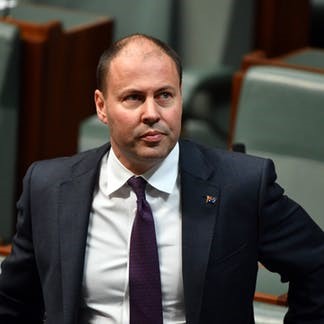The Australian Bureau of Statistics today (4 December 2019) released the September quarter 2019 results for the Australian National Accounts.

The results showed that the Australian economy grew 0.4% (seasonally adjusted) in the September quarter 2019 and grew 1.7% annually. This result is up 0.3% from the previous annual period that showed annual GDP growth of 1.4%. Overall, the September quarter 2019 result showed that the Australia economy is growing well below the long-run average of around 3.1% annual growth.
What are the changes to the components of GDP?
Household final consumption expenditure increased by 0.1% (seasonally adjusted) in the September quarter and increased 1.2% (seasonally adjusted) annually. General Government consumption expenditure increased by 0.9% (seasonally adjusted) in the September quarter and increased 6% (seasonally adjusted) annually. Overall, total final consumption expenditure increased by 0.3% (seasonally adjusted) in the quarter and increased 2.4% (seasonally adjusted) annually. Total final consumption expenditure contributed 0.2% (seasonally adjusted) to GDP growth in the September quarter. These figures show that growth in consumption expenditure, which represents around 60% of GPD, remains very weak.
Total gross fixed capital formation (or investment expenditure) fell 0.2% (seasonally adjusted) in the September quarter and fell 3.8% annually. This result was mainly driven by a fall of 4.2% (seasonally adjusted) in machinery and equipment and a fall of 1.7% (seasonally adjusted) in dwellings for the September quarter. This fall in private investment was partially offset by an increase in public investment of 1.9% (seasonally adjusted) and 0.2% (seasonally adjusted) annually.
Terms of trade rose by 0.4% (seasonally adjusted) in the September quarter and grew 7.8% annually. Exports rose by 0.7% (seasonally adjusted) in the September quarter. This was mainly driven by increases in non-monetary gold, other mineral fuels and mineral ores, which was partly offset by falls in coal and rural goods. Exports contributed 0.2% to GDP growth in the quarter.
What are the overall thoughts of this result?
The Australian domestic economy remains sluggish, while the external sector drove growth for the quarter. Government expenditure was the main contributor to growth in domestic final demand, reflecting ongoing delivery of services within the health care sector. However, total gross fixed capital formation continues to fall over consecutive quarters. An interesting point is that the household savings ratio rose to 4.8%, this reflects the reduction in income tax not translating into a rise in discretionary consumer spending.
A consensus is building around the fact that traditional monetary policy is not able to simulate economic growth and domestic private investment. The result is that expansionary fiscal policy tools is needed to stimulate economic activity.
What is the market reaction?
The Australian share market is down 1.6% today reflecting renewed concerns over US trade tensions rather than today’s weak GDP numbers. In fact, today’s result from the Australian National Accounts is broadly in line with market expectations. Further, today’s result does not change the market’s view of expectations of a further easing in monetary policy in coming months.
Disclaimer:
This article has been prepared by the Australian Stock Report Pty Ltd (AFSL: 301 682. ABN: 94 106 863 978)
(“ASR”). ASR is part of Amalgamated Australian Investment Group Limited (AAIG) (ABN: 81 140 208 288 Level 13, 130 Pitt Street, Sydney NSW 2000).
This article is provided for informational purpose only and does not purport to contain all matters relevant to any particular investment or financial instrument. Any market commentary in this communication is not intended to constitute “research” as defined by applicable regulations. Whilst information published on or accessed via this website is believed to be reliable, as far as permitted by law, we make no representations as to its ongoing availability, accuracy or completeness. Any quotes or prices used herein are current at the time of preparation. This document and its contents are proprietary information and products of our firm and may not be reproduced or otherwise disseminated in whole or in part without our written consent unless required to by judicial or administrative proceeding. The ultimate decision to proceed with any transaction rests solely with you. We are not acting as your advisor in relation to any information contained herein. Any projections are estimates only and may not be realised in the future.
ASR has no position in any of the stocks mentioned.

















